James Curran designed the world’s first chairlift — and helped skiing soar into new heights of popularity
An engineer for Union Pacific Railroad, James Curran was tasked with increasing rail travel to Sun Valley Resort in Idaho. While rail traffic never improved, his ingenious chairlift sparked a sports phenomenon.
James Curran swept millions of people off their feet with an idea that changed global recreation.
The Nebraska native created the chairlift, an essential fixture of ski resorts here in the United States and around the world.
Curran's remarkable American innovation enjoyed its world debut in Dec. 1936 at Sun Valley Resort in Ketchum, Idaho.
It instantly made mountains smaller, adventure easier and downhill skiing accessible to even the most casual athletes.
MEET THE AMERICAN WHO TURNED ICE INTO GOLD, FREDERIC TUDOR, SAW GLOBAL COMMODITY IN WINTER PONDS
"He set the stage for the sport to become a global phenomenon," Justin Koski, executive director of the nonprofit U.S. Ski and Snowboard Hall of Fame and Museum in Ishpeming, Michigan, told Fox News Digital.
Sun Valley, the first destination ski resort in the United States, was built by Union Pacific Railroad during the Great Depression.

James Curran, an engineer for Union Pacific railroad, designed the world's first ski chairlift. It debuted in Dec. 1936 with the opening of Sun Valley resort in Idaho. America's first destination ski resort was built by Union Pacific to boost rail travel. The chairlift played a major role in boosting the popularity of skiing around the world. (Courtesy U.S. Ski-Snowboard Hall of Fame)
The ambitious concept, an amusement park of outdoor activity, was designed to boost rail travel at a time when the automobile was rapidly becoming the preferred means to crisscross America.
The chairlift was critical to the concept. Railroad executives hoped the idea of gliding up mountains to race back down would encourage Americans to punch a ticket to Idaho.
"He set the stage for the sport to become a global phenomenon."
An engineer for Union Pacific, Curran tackled the daring challenge: Safely lift 100 people each hour on a 2,000-foot ascent to the summits of the Sun Valley mountains.
Primitive rope pulleys, with limited capacity, had appeared at European resorts a few decades earlier.
But skiing was stil largely limited to a few hearty outdoorsmen and members of elite military units. Downhill skiing typically meant climbing summits by foot.
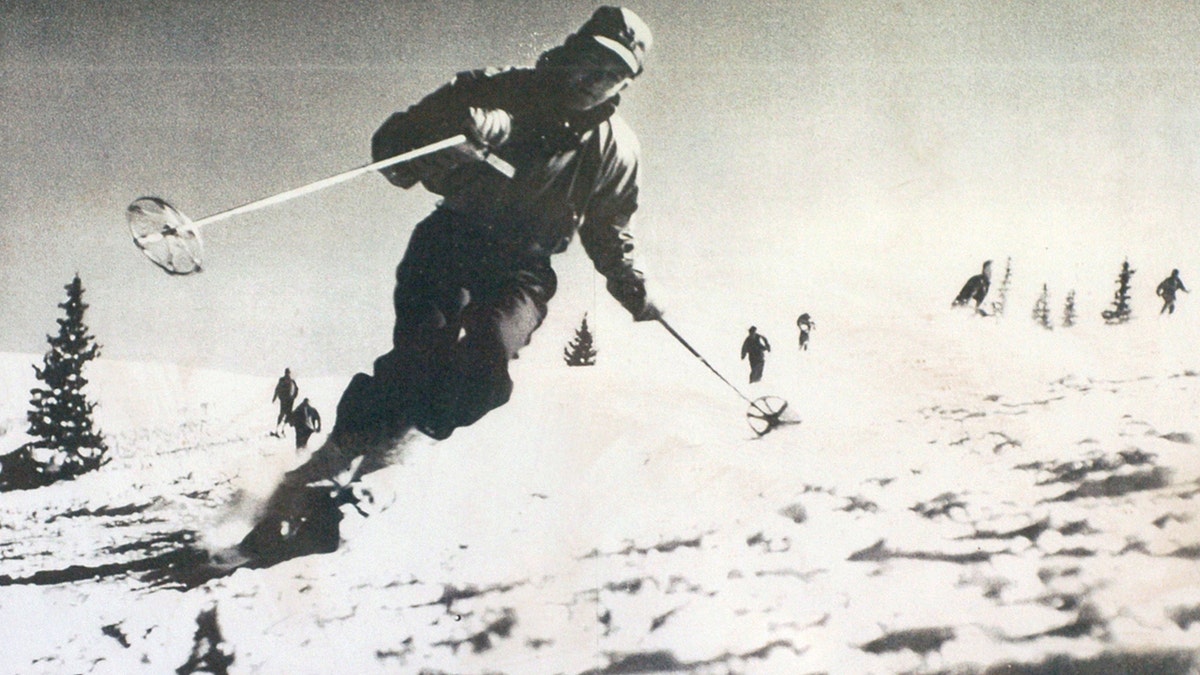
Richard Over, a member of the 10th Mountain Division, trains at Camp Hale Colorado in the early 1940s for military duty in Alaska and Italy. (Helen H. Richardson/The Denver Post via Getty Images)
Curran proposed a cable-chair system that swept behind the legs of skiers, plopped them on their frosty bottoms and glide them to the summit with skis dangling 40 feet above idyllic winterscapes of snow trials, treetops and mountain vistas.
Curran initially suffered the eternal Fate of the Visionary.
He was ridiculed by doubters.
"The idea was so outlandish, so far-fetched, people thought it sounded like the most dangerous thing, they thought he was crazy," said Koski.
Self-made engineer
James Michael Curran was born on June 9, 1903, in Omaha, Nebraska, the sixth child among seven of Thomas and Margaret Curran.
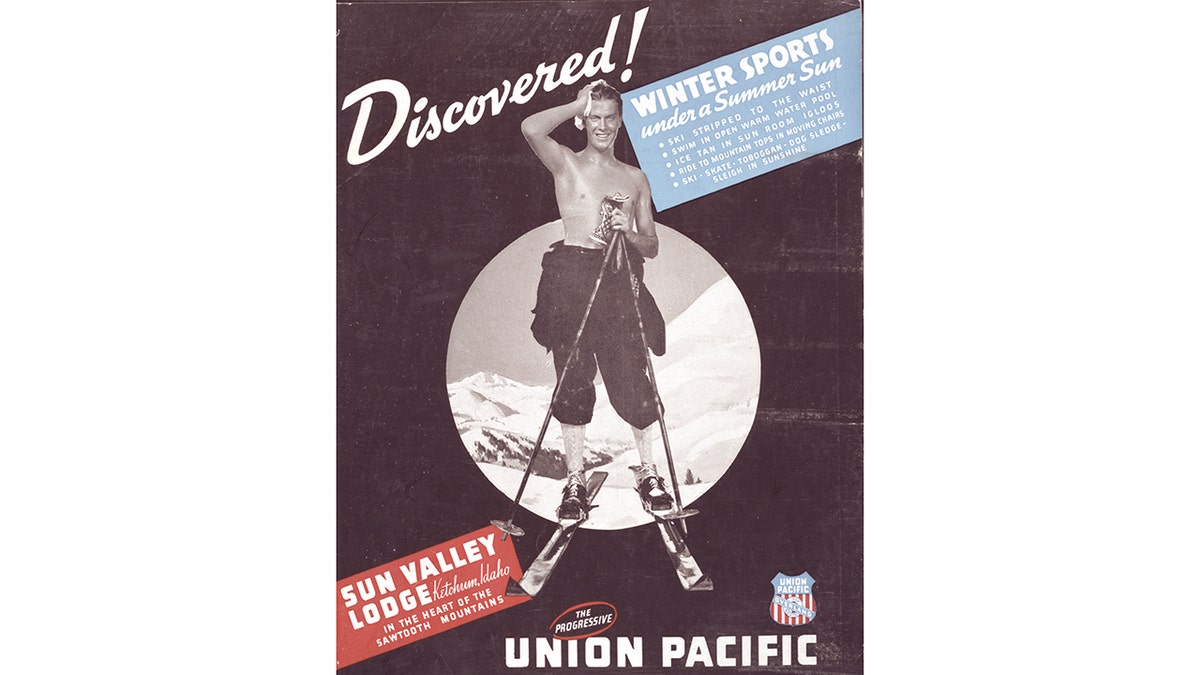
"Discovered! Winter Sports Under a Summer Sun" poster featuring man in ski gear with no shirt. Advertisement contains list of activities at Sun Valley Resort, Idaho, and a suggestion to stay at the Sun Valley Lodge in Ketchum, Idaho. (Courtesy Union Pacific Railroad Museum)
Thomas was an immigrant from Ireland; Margaret was reportedly born in Pennsylvania to an Irish father.
Curran had the intellect and/or ambition to pass Nebraska’s licensed engineer exam with only a high school education, and went to work for Paxton Vierling Steel.
WINTER QUIZ! HOW WELL DO YOU KNOW THESE FUN FACTS ABOUT THE COLDEST SEASON?
"One of his first jobs," the Ski and Snowboard Hall of Fame reports, "was designing an aerial conveyor system for hauling and loading a continuous flow of bananas from the loading docks of United Fruit to the fruit-boat holds in Honduras."
The experience with banana boats would one day change the global skiing industry.
Curran arrived at Union Pacific in 1927 as passenger rail travel in the United States plummeted.
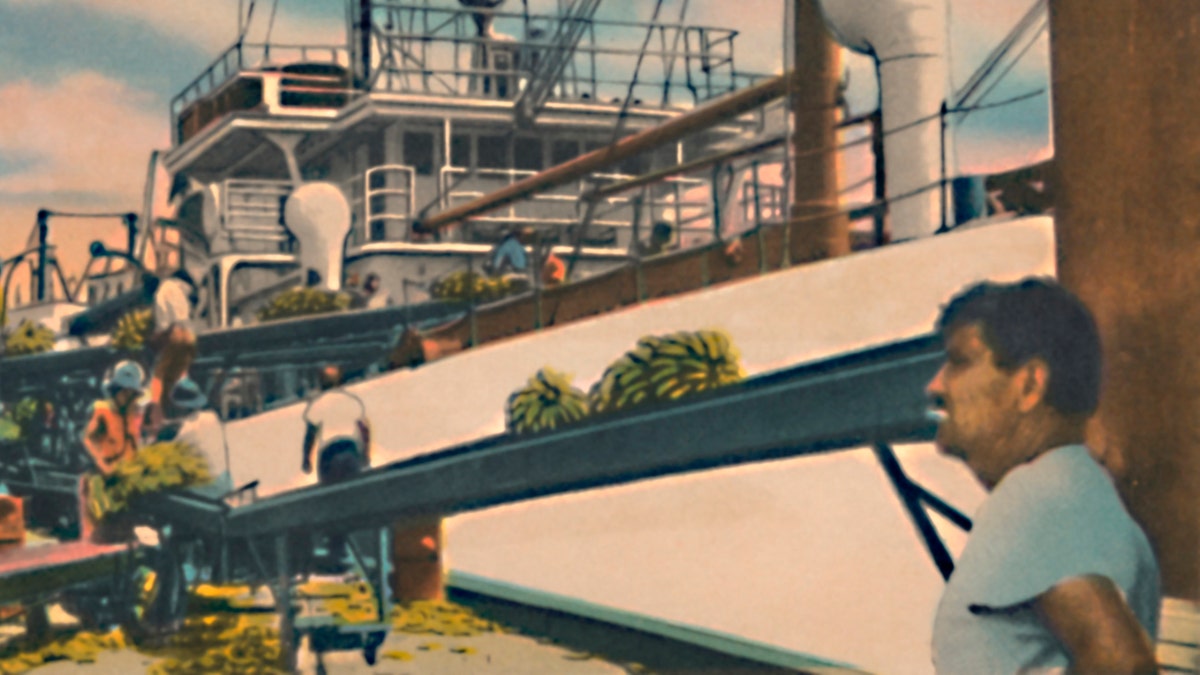
Unloading Bananas, Tampa, Florida, circa 1940s. Tichnor Quality Views, Boston. Artist Unknown. (Collector/Getty Images)
Passenger revenue dropped 50% in the three years following the stock market crash of 1929, and then half again by 1935, according to a report provided by the railroad.
Union Pacific chairman W. Averell Harriman was a founder of Wall Street firm Brown Brothers Harriman & Co. He later served as U.S. Secretary of Commerce and then governor of New York.
"We wanted to offer these people … new opportunities for healthful recreation."
The astute business mogul snapped up mountain land around Ketchum and conceived a destination ski resort as a way to boost rail travel, diversify the company's assets and save it from disaster.
"We felt that the growing interest in skiing and winter sports generally warranted the development of a new American resort," Harriman said at the time, noting the activity was enjoyed largely by wealthy Americans in Europe.
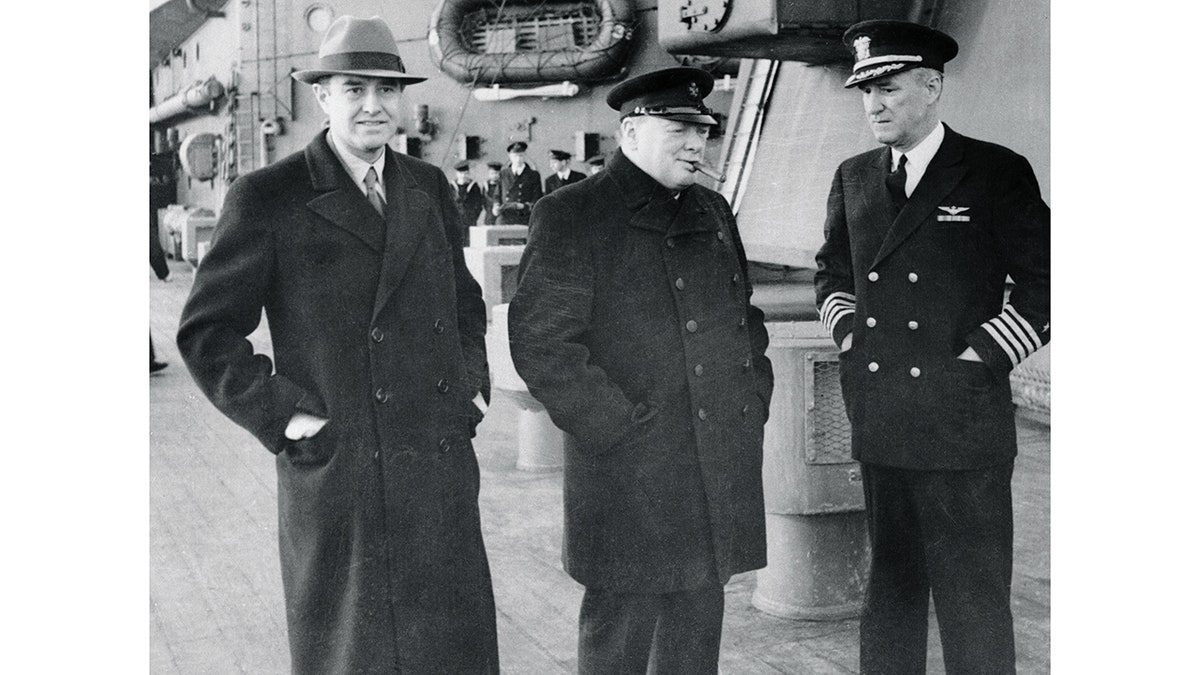
(Original Caption) Aboard the new British battleship Duke of York on which Prime Minister Winston Churchill made his recent crossing to America, as the vessel entered American waters. Photo shows, left to right: W. Averell Harriman, U.S. lendlease expediter; the Prime Minister; and Capt. Paul Cassard, U.S.N., who came aboard as the battleship neared America. (Getty Images)
"We wanted to offer these people and many thousands more of smaller incomes new opportunities for healthful recreation."
The success of the venture depended on new, better, faster, safer and easier way to get people up mountains.
His idea was bananas
The success of the Sun Valley project fell onto the shoulders of Union Pacific engineers with the arrival of a telegram from Harriman.
"It is essential in connection with Ketchum enterprise to develop a method of lifting skiers 2,000 feet above the valley floor to mountain," Harriman wrote in the urgent message.
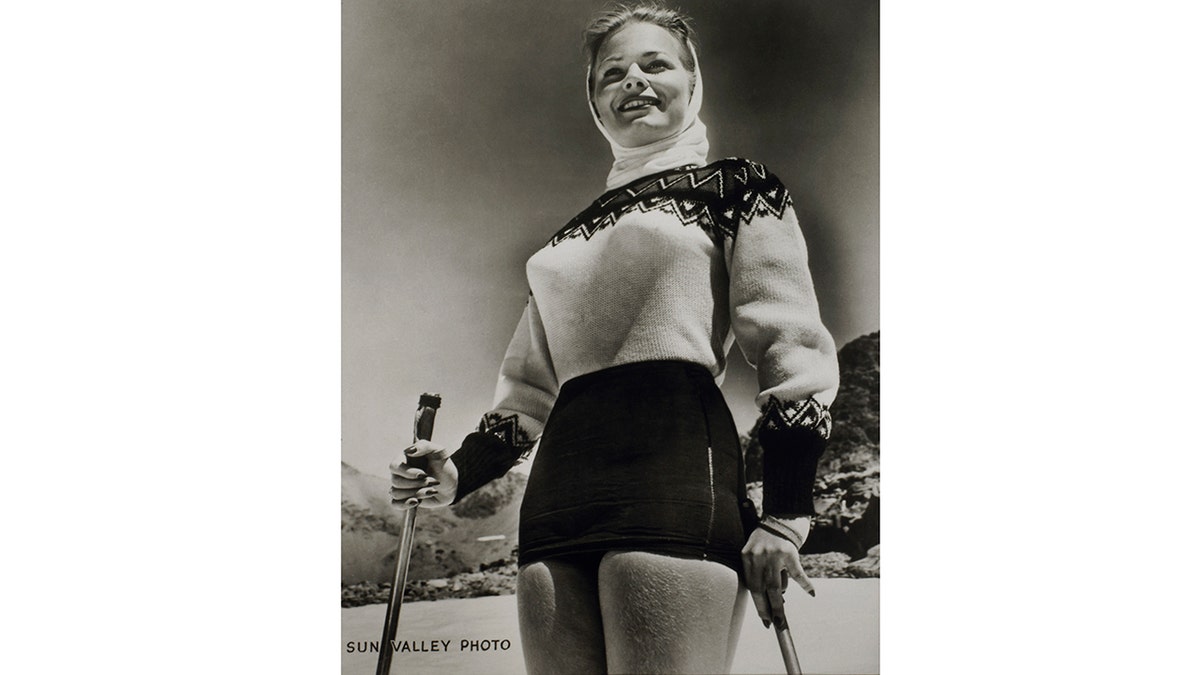
Woman modeling latest ski fashion, Sun Valley, Idaho, USA, circa 1945. (Universal History Archive/Universal Images Group/Getty Images)
"Suggest you have one of your engineers discuss the problem … and examine [the] terrain with a view of making a recommendation how the problem can be solved in the most economic manner."
Union Pacific reports of the events that followed: "Several mechanical engineers looked to adapt rope tows, J-bars and cable cars. One young engineer, Jim Curran, had a different idea."
MEET THE AMERICAN WHO CREATED TIME ZONES, CHARLES F. DOWD, SCHOOLMASTER SET CLOCK FOR MANKIND
His idea was bananas.
Curran remembered the experience from his earlier job watching as a conveyor system carried bananas from dock to cargo ship.
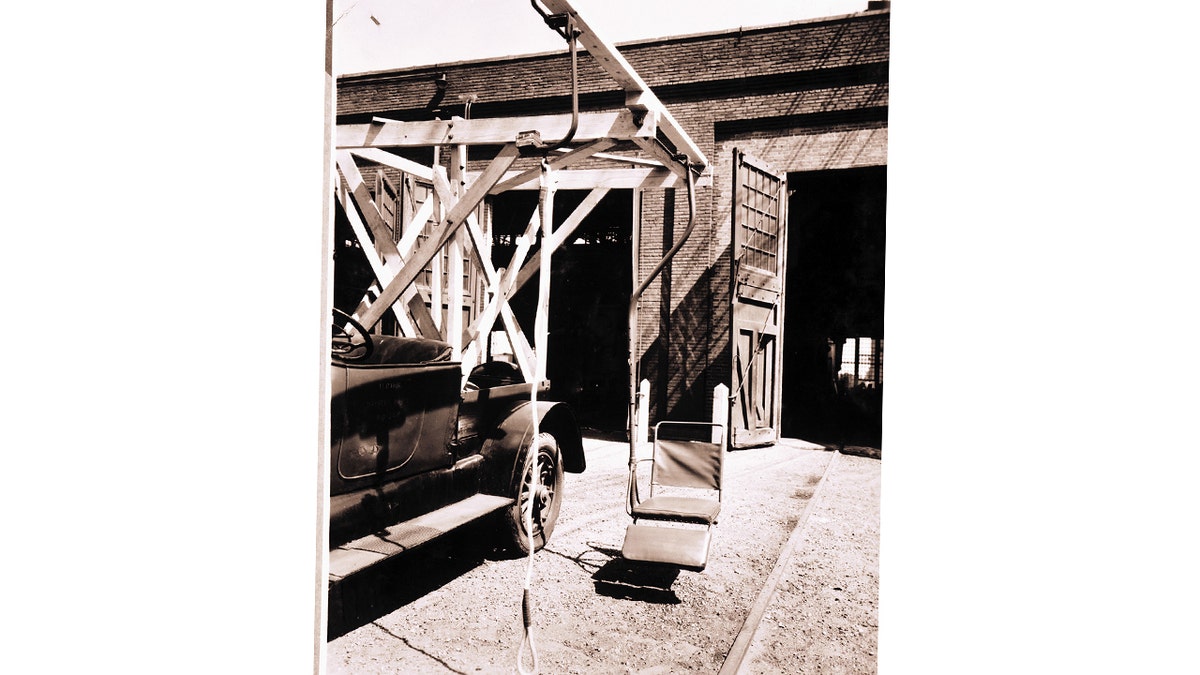
Chairlift prototype developed by Union Pacific employee James Curran. To test his idea, he installed a prototype in the back of a pickup truck and strapped on a pair of skis mounted on roller skates. (Courtesy Union Pacific Railroad Museum)
"If we can lift bananas onto a boat without bruising them, we can certainly lift people safely up a mountain," Curran reportedly said in an oft-told version of the story, shared with Fox New Digital by Patricia LaBounty, curator of the Union Pacific Railroad Museum in Council Bluffs, Iowa.
The system he saw had banana bunches placed on hooks attached to a cable, according to several accounts.
"If we can lift bananas onto a boat without bruising them, we can certainly lift people safely up a mountain."
Curran’s design replaced the hooks with chairs, on a larger, sturdier platform to ferry humans instead of fruit.
He constructed his chairlift in a car repair shop in downtown Omaha.
Curran tested the concept by attaching the chair to the side of a truck and scooping up people with skis on top of roller skates on city streets. It worked brilliantly.

Sun Valley resort in the winter of 1937. This image shows the newly installed chairlift in action taking skiers up the mountain in front of spectators. (Courtesy Union Pacific Railroad Museum )
Curran learned on flat Omaha pavement, 1,200 miles from Sun Valley, that the ideal speed at which to safely scoop up people wearing skis and gently plop them on their backsides was 4 to 5 miles per hour.
The same chairlift speed limit is still used at ski resorts today.
The chair of Union Pacific, one of the world's most powerful businessmen, was among those swept off his feet by Curran's design.
"Averell Harriman tested the pickup truck prototype on the streets of Omaha and declared it a success," reports the Union Pacific Railroad Museum.
Sun Valley quickly established itself as the nation's most coveted resort, attracting celebrities, politicians, competitive athletes and, yes, weekend warriors. The ski industry rushed to adopt the chairlift.
Design still elevates industry
James M Curran died on Feb. 12, 1968 in Omaha and rests in his hometown at Calvary Cemetery.
He was 64 years old.
Curran, according to numerous accounts, never skied before his innovation. He never skied afterward, either.
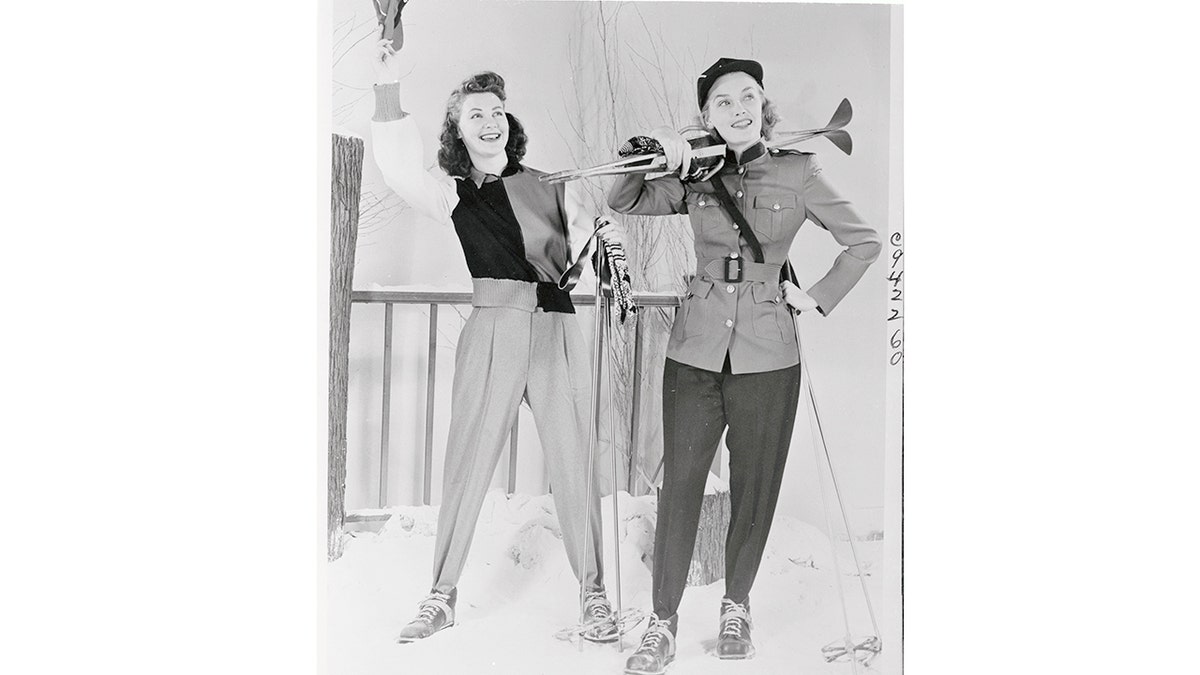
Woman modeling early ski fashions created by Sun Valley, Idaho designer F. A. Picard. The outfits spotlight the military trend in fashion around WWII. (Getty Images)
Yet the high-school-educated Great Plains engineer was inducted into the U.S. Ski-Snowboard Hall of Fame in 2001.
He set standards for ascending mountains that still elevate the ski industry today.
"A tramway engineer who reviewed Jim Curran’s notes and drawings for chairlifts found that the calculations for rope tensions, rope sags, driving torques and horsepower that Curran used in 1936 are virtually the same methods used today," the Hall of Fame writes.
Curran’s chairlift wasn’t enough to save the railroads from changing fortunes and a new era of travel.
But it did, unexpectedly, create new fortunes for entrepreneurs and a new era in recreation around the world.

A large crowd of skiers at Mammoth Mountain ski resort in California waiting to get on chairlifts and ascend the mountain. Skiing exploded in popularity in the United States and around the world with the creation of the chairlift in 1936. All of the nearly 500 ski areas in the United States have chairlifts. (George Rose/Getty Images)
With the summits of once foreboding peaks now accessible simply by sitting down, the ski industry exploded in popularity around the world.
The chairlift hooked the nation on the addictive thrill of speeding down mountain slopes paired with the effort of sitting in an easy chair to get up it.
"A tramway engineer who reviewed Jim Curran’s notes and drawings for chairlifts found that the calculations … are virtually the same methods used today."
Koski estimates that fewer than 1,000 hearty Americans attempted Alpine skiing each year, before 1936. The ski epidemic now includes about 13 million users each year in the United States alone.
CLICK HERE TO SIGN UP FOR OUR LIFESTYLE NEWSLETTER
Chairlifts, in most cases several of them, are fixtures at all of the nearly 500 ski areas across the country, as well at resorts around the world.
Curran’s chairlift elevated competitive skiing in America, too. It made the United States a global power in international skiing.
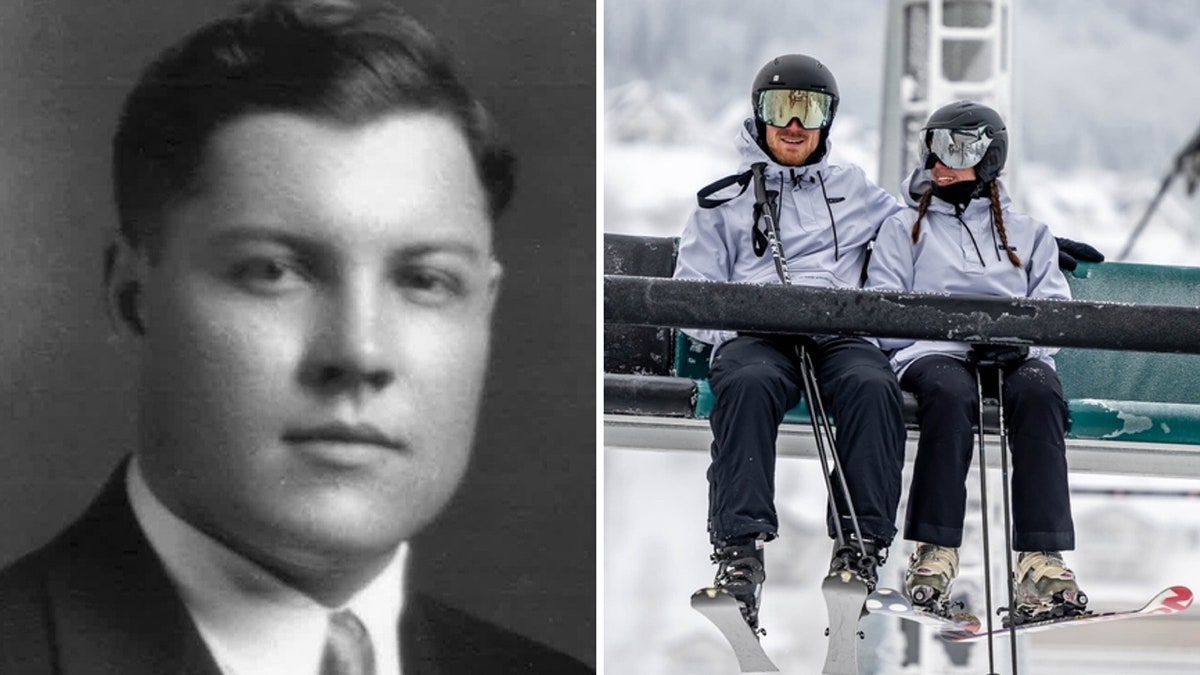
James Curran, left, created the ski chairlift in 1936 as an engineer for Union Pacific Railroad. (U.S. Ski & Snowboard Hall of Fame; Getty Images)
American men broke Europe’s monopoly on Olympic medals with slalom Silver and Bronze by Billy Kidd and Jimmy Heuga in 1964.
Both were born in 1943, children of Curran’s chairlift ski-boom generation.
CLICK HERE TO GET THE FOX NEWS APP
"The railroad wasn't in the ski business, but they were in the transportation business," said LaBounty of the Union Pacific Railroad Museum.
"They had a transportation problem to solve, and Curran solved it."
To read more stories in this unique "Meet the American Who…" series from Fox News Digital, click here.
For more Lifestyle articles, visit noticias.foxnews.com/lifestyle.





















